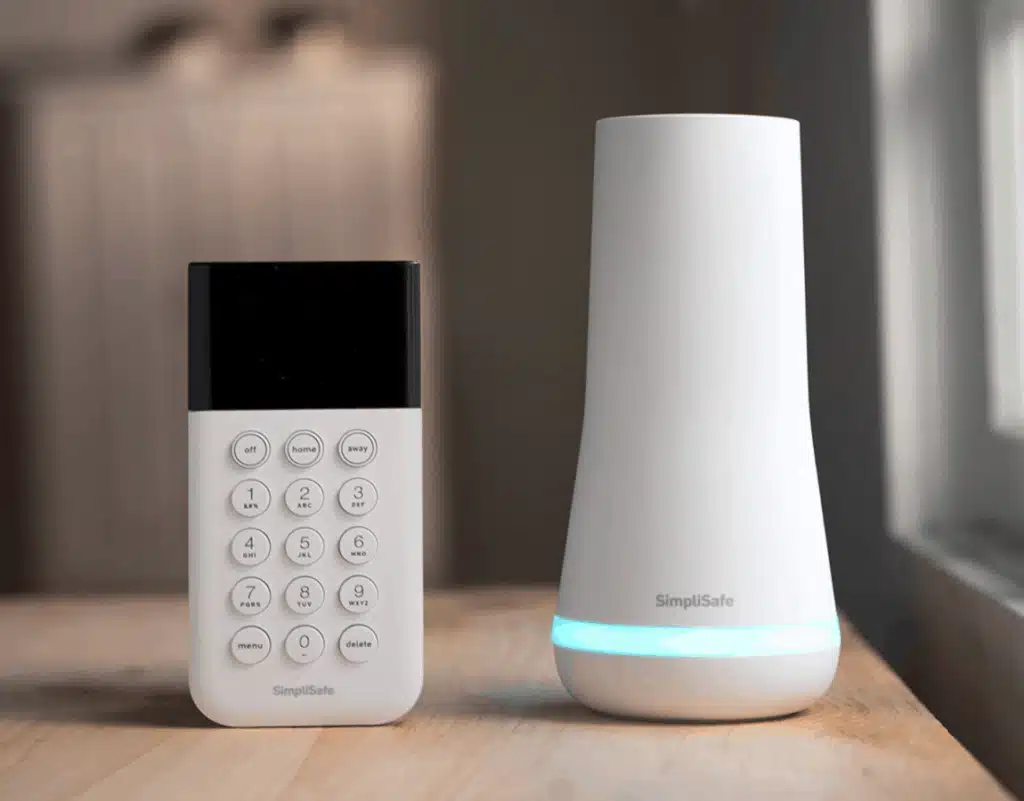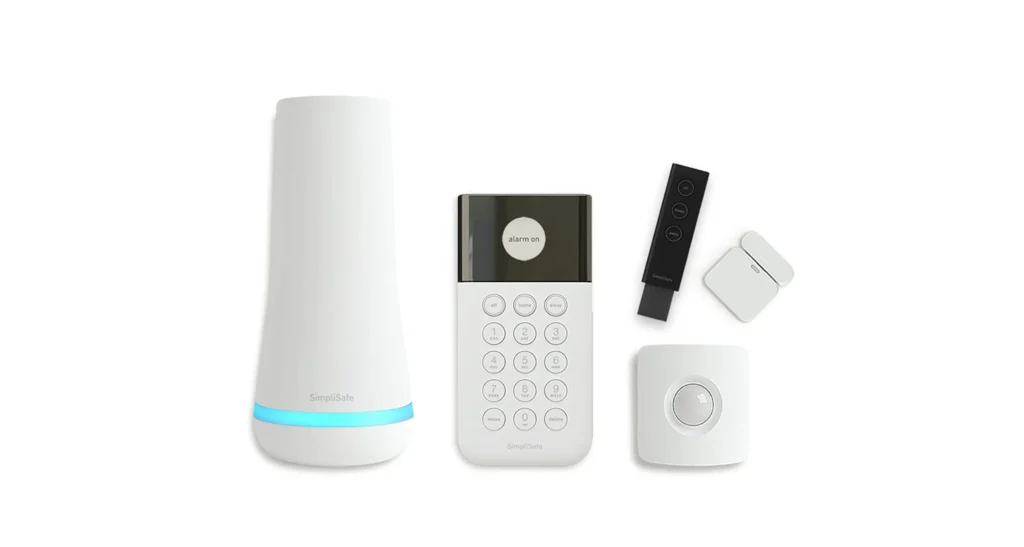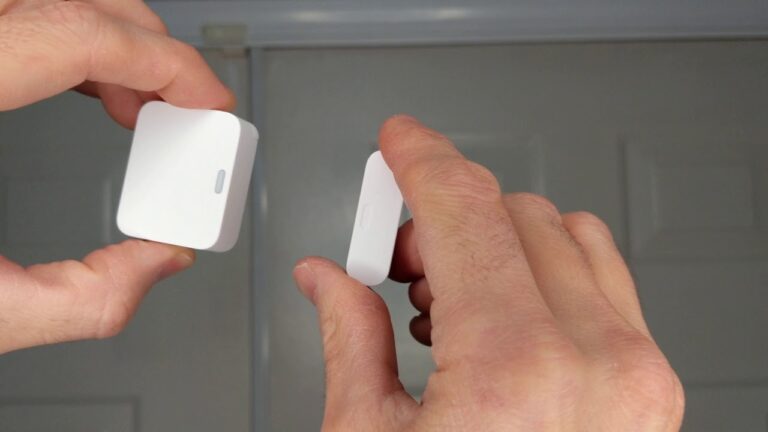Introduction
How To Install Simplisafe Motion Sensor: Installing a SimpliSafe motion sensor is a crucial step in ensuring the security of your home or office. With its advanced technology and user-friendly features, SimpliSafe has become a popular choice for many homeowners and business owners alike. Whether you are a first-time user or have previous experience with security systems, this guide will provide you with step-by-step instructions on how to install a SimpliSafe motion sensor effectively.
SimpliSafe is known for its innovative approach to home security. Unlike traditional security systems that require professional installation and long-term contracts, SimpliSafe base station offers a DIY solution that is easy to set up and customize according to your specific needs. With SimpliSafe, you have the flexibility to add or remove sensors as required, making it a cost-effective and scalable option for any property.
Furthermore, SimpliSafe’s motion sensors are designed to detect any movement within their range, providing an additional layer of protection to your premises. Whether you want to secure your main entrance, hallway, or specific rooms, the motion sensor can be strategically placed to ensure comprehensive coverage.
By following these simple steps, you can successfully install a SimpliSafe motion sensor and enhance the security of your property. Remember to regularly test and maintain your security system to ensure its optimal performance. Stay tuned for our next article, where we will explore additional features and tips for maximizing the effectiveness of your SimpliSafe system.

How far can SimpliSafe motion sensors be from base?
SimpliSafe motion sensors are an essential component of the SimpliSafe home security system, providing an added layer of protection by detecting any movement within their range. One common question that arises when setting up a security system is how far these motion sensors can be placed from the base station.
Several factors can affect the range of SimpliSafe motion sensors. One of the primary factors is the type of motion sensor being used. SimpliSafe offers both standard motion sensors and pet-friendly motion sensors. The standard motion sensors have a range of up to 30 feet, while the pet-friendly sensors have a reduced range of up to 20 feet. This reduction in range is to prevent false alarms caused by pets moving within the sensor’s field of view.
SimpliSafe Motion Sensors
The layout and structure of your home also play a role in determining the range of motion sensors. Walls, furniture, and other obstacles can obstruct the sensor’s field of view and reduce its range. It is important to consider these factors when deciding where to place the motion sensors. Ideally, the sensors should be positioned in areas where they have a clear line of sight and minimal obstructions.
Another factor to consider is the positioning of the base station. The base station acts as the central hub for the SimpliSafe system and communicates with the motion sensors. Placing the base station in a central location within your home can help maximize the range of the motion sensors. Additionally, the base station should be positioned away from any large metal objects or appliances that could interfere with the signal.
SimpliSafe motion sensors depends on various factors such as the type of sensor. The layout of your home, and the positioning of the base station. By considering these factors and strategically placing the motion sensors, you can ensure optimal coverage and effectiveness of your SimpliSafe home security system.
Is SimpliSafe easy to install?
Yes, SimpliSafe is incredibly easy to install. Whether you are a tech-savvy individual or someone who is not very familiar with technology. You will find the installation process to be straightforward and hassle-free. With SimpliSafe, you don’t need to worry about drilling holes, running wires, or dealing with complicated setups. The system is designed to be user-friendly and can be installed in just a few simple steps.
One of the reasons why SimpliSafe is so easy to install is because it is a wireless system. This means that you don’t have to deal with any messy wires or cables. All the components of the system communicate with each other wirelessly, making the installation process much simpler. You can easily place the sensors, cameras, and other devices wherever you want without having to worry about connecting them with wires.
The straightforward nature of SimpliSafe’s installation is another selling point. There’s a comprehensive manual that walks you through setting up the system. In case you get stuck, SimpliSafe has you covered with both online video lessons and a dedicated support team. The setup process will go well because the instructions are straightforward and simple to follow.
Furthermore, SimpliSafe offers a range of pre-configured packages that are tailored to different needs. These packages come with all the necessary components and accessories, making it even easier for you to install the system. Whether you choose the basic package or opt for a more advanced one. You can rest assured that the installation process will be a breeze.
What is the best placement for motion sensor?
When it comes to installing a motion sensor, finding the best placement is crucial for its effectiveness. A motion sensor is a device that detects movement and triggers an action. Such as turning on lights or sounding an alarm. To ensure optimal performance, it is important to consider various factors when determining the placement of a motion sensor.
Factors to Consider:
One important factor to consider is the purpose of the motion sensor. Are you installing it for security purposes or for convenience? For security, it is recommended to place the sensor in areas where an intruder is likely to pass, such as near entry points or in hallways. On the other hand, if the motion sensor is for convenience, it can be placed in areas where you frequently move, such as the kitchen or living room.
Another factor to consider is the range and angle of detection of the motion sensor. Most motion sensors have a specific range within which they can detect movement. It is important to position the sensor in a way that covers the desired area without any blind spots. Additionally, considering the angle of detection is crucial to avoid false alarms caused by pets or other moving objects.
Placement Recommendations:
For outdoor security purposes, it is recommended to install motion sensors above entry points, such as doors and windows. This placement ensures that any movement near these vulnerable areas triggers the sensor. Additionally, placing motion sensors near garages or driveways can provide an extra layer of security.
For indoor security, motion sensors can be placed in hallways. Staircases, or other areas that intruders are likely to pass through. It is important to position the sensor at a height that covers the entire area and avoids any obstructions. Placing motion sensors near valuable items or in rooms with high-value assets can also enhance security.
Can I put SimpliSafe motion sensor outside?
Many people wonder if it is possible to install a SimpliSafe motion sensor outside their homes. The answer to this question depends on various factors. Including the specific model of the motion sensor and the environmental conditions it will be exposed to. In general, SimpliSafe motion sensors are designed for indoor use. But there are some models that can be used outdoors with certain precautions.
Firstly, it is important to check the specifications of the motion sensor you have or plan to purchase. Some SimpliSafe motion sensors are explicitly labeled as suitable for outdoor use, while others are intended for indoor use only. If the motion sensor is not explicitly designed for outdoor use. It is generally not recommended to install it outside as it may not be able to withstand the elements.
Secondly, even if the motion sensor is labeled as suitable for outdoor use, it is essential to consider the environmental conditions it will be exposed to. Outdoor motion sensors need to be able to withstand rain, snow, extreme temperatures, and other weather conditions. If the motion sensor is not designed to handle these conditions, it may malfunction or become damaged, rendering it ineffective.
Thirdly, if you do decide to install a SimpliSafe motion sensor outside. It is crucial to follow the manufacturer’s instructions and recommendations. This may include mounting the sensor in a specific location, using weatherproof housing or enclosures, and ensuring proper installation and maintenance. Failure to follow these instructions could result in the motion sensor not functioning correctly or becoming damaged.
How are SimpliSafe sensors powered?
SimpliSafe sensors are powered by batteries, specifically lithium batteries. These batteries provide a reliable and long-lasting power source for the sensors, ensuring that they can function effectively and continuously. The use of lithium batteries is a deliberate choice by SimpliSafe. As they offer several advantages over other types of batteries.
Firstly, lithium batteries have a high energy density. Meaning they can store a large amount of energy in a compact size. This is particularly important for sensors, as they need to be small and unobtrusive in order to blend seamlessly into the home environment. The high energy density of lithium batteries allows SimpliSafe to design sensors that are sleek and discreet, without compromising on performance.
SimpliSafe Sensors Powered
Second, lithium batteries last for a very long time and deplete very slowly. This means that the sensors will continue to function even if they are not triggered for a long time. Charged batteries will stay charged until they are needed. Users of SimpliSafe who have sensors installed in less-frequently-visited regions of their homes, including basements or attics, would appreciate this feature.
Furthermore, lithium batteries are known for their stability and reliability. They are less prone to leakage or corrosion, which can be a common issue with other types of batteries. This ensures that SimpliSafe sensors remain operational and continue to provide accurate and timely information to the security system.
To install a SimpliSafe motion sensor, you will need a few essential tools and equipment. These include a screwdriver, preferably a Phillips-head screwdriver, to remove any existing screws or to secure the sensor in place. Additionally, you may need a ladder or step stool if the installation location is out of reach.
It is important to note that SimpliSafe provides all the necessary mounting hardware and adhesive strips required for installation. However, if you prefer a more secure installation, you may also need wall anchors and screws, which are not included in the standard package.
Overall, the installation process for a SimpliSafe motion sensor is relatively straightforward and does not require any specialized tools or equipment. With the provided hardware and a basic screwdriver, you can easily set up the sensor in a matter of minutes.
Are there any specific placement requirements for a SimpliSafe motion sensor during installation?
When installing a SimpliSafe motion sensor, it is important to consider specific placement requirements to ensure optimal performance. The motion sensor should be positioned at a height of 6 to 7 feet above the ground, and it should be mounted on a wall or corner where it has a clear line of sight to the area you want to monitor. Avoid placing the sensor near windows, vents, or heating sources, as these can cause false alarms or interfere with its functionality.
Additionally, it is crucial to avoid placing the motion sensor in areas with direct sunlight or extreme temperature fluctuations, as these conditions can affect its accuracy. The sensor should be installed in a stable location, free from any vibrations or movement that could trigger false alarms. It is recommended to test the sensor’s range and sensitivity after installation to ensure it covers the desired area effectively.
By following these specific placement requirements. You can maximize the effectiveness of your SimpliSafe motion sensor and ensure reliable detection of any motion within the designated area.
How long does it typically take to install a SimpliSafe motion sensor?
Installing a SimpliSafe motion sensor is a relatively quick and straightforward process. The time it takes to complete the installation will depend on various factors. Including your familiarity with the system and the specific placement requirements of the sensor. On average, it should take around 15 to 30 minutes to install a SimpliSafe motion sensor.
Before beginning the installation, it is important to gather all the necessary tools and equipment. These typically include a screwdriver, double-sided adhesive tape, and the SimpliSafe motion sensor itself. Having these items readily available will help streamline the installation process and ensure a smooth experience.
To install the SimpliSafe motion sensor, start by selecting an appropriate location for placement. It is recommended to choose an area that provides optimal coverage and minimizes the chances of false alarms. Once you have identified the ideal spot, use the double-sided adhesive tape or screws (depending on your preference) to securely mount the sensor.
After mounting the sensor, ensure it is properly aligned and level. This is crucial for accurate motion detection. Once aligned, activate the sensor by removing the battery tab or following the specific activation instructions provided by SimpliSafe. Finally, test the sensor to ensure it is functioning correctly by walking in front of it and checking if the associated SimpliSafe system registers the motion.
By following these steps and taking into account the specific placement requirements, you can quickly and effectively install a SimpliSafe motion sensor to enhance the security of your home or business.

Conclusion
A SimpliSafe motion sensor is a straightforward process that can greatly enhance the security of your home or office. By following the instructions provided, you can easily set up the motion sensor and ensure that it is functioning properly. This conclusion will summarize the key steps involved in installing a SimpliSafe motion sensor and highlight the importance of this device in safeguarding your property.
The first step in installing a SimpliSafe motion sensor is to identify the ideal location for placement. It is recommended to choose an area that provides a wide coverage range and is free from obstructions. Once you have determined the location, you can proceed to mount the sensor using the provided adhesive or screws. The sensor should be positioned at a height of around 6 to 7 feet, ensuring that it is not easily tampered with or triggered by pets.
After mounting the motion sensor, the next step is to pair it with your SimpliSafe security system. This can be done by accessing the system’s settings and following the on-screen instructions. It is important to ensure that the motion sensor is within range of the base station to establish a reliable connection. Once the pairing process is complete, you can test the sensor by walking in front of it and checking if it triggers the alarm or sends a notification to your smartphone.

